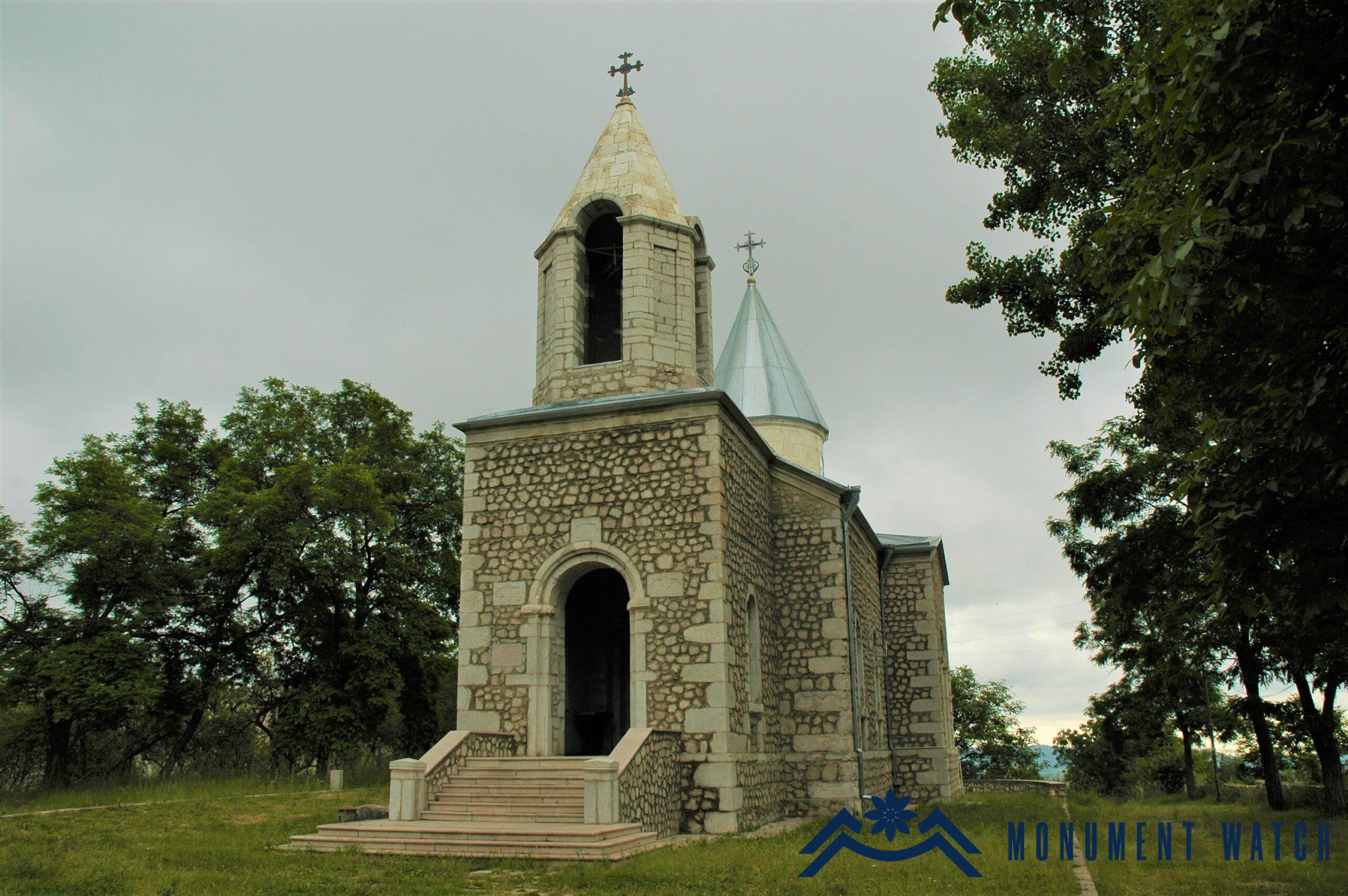Azerbaijan demolished the Surb Hovhannes Mkrtich (Kanach Zham) Church of Shushi, reducing it to rubble
Another instance of Azerbaijani vandalism has been documented by our partners, the "Caucasus Heritage Monitoring" (CHW) initiative, using satellite photos (Fig. 1). This time, the target of the vandalism was the Kanach Zham or Surb Hovhannes Mkrtich Church of Shushi, which was built in 1847.
Let's remind that the Church of Kanach Zham in Shushi (Fig. 2) was targeted during the military operations of the 2020, thereby violating international principles of heritage protection during wartime and the norms of humanitarian law.
Shortly after the 2020 war, the Kanach Zham was blown up, resulting in damage to the church dome and bell tower (Figs. 3-5). Later, in July 2021, Azerbaijanis unjustifiably denied the Armenian affiliation of the church, initiated efforts to present the structure as Russian Orthodox, and attempted to "transform" the church. They also conducted illegal rituals in the church, violating the religious rights and function of the Armenian community (Figs. 6-7). Additionally, the side chapel attached to the church, which was built as an integral part of the ritual function of the church serving the Armenian Christian community, and also served as a meeting place and library for the clergy, was converted into a cafe by Azerbaijan.
Our response
The Kanach Zham, Surb Hovhannes Mkrtich Church in Shushi was subjected to a series of crimes during the war and throughout the occupation by Azerbaijan. These actions violated both the international norms of wartime heritage protection and the principles of authenticity and integrity established by UNESCO. The church was desecrated, undermining the immaterial Christian tradition it represented, as well as the rights of Artsakh Armenians. Unable to find a valid argument to de-Armenianize it, Azerbaijan ultimately completely destroyed the church.
Damage to the church, as outlined in the 1954 Hague Convention on the Protection of Cultural Property in Armed Conflict, constitutes a serious violation. According to Article 4 of the Convention, and additionally, Article 15(a) of the adopted Second Protocol in 1999, such actions can be prosecuted as war crimes in international courts https://www.arlis.am/DocumentView.aspx?DocID=31415.
In addition to being a grave crime against humanity, the intentional destruction of the Church is prohibited by Article 8 of the Rome Statute.
Moreover, the destruction of the Kanach Zham Church is also regarded as a genocidal act, as the issue of genocide is now considered in the context of attacks on cultural heritage (ICC, Policy on Cultural Heritage, para. 88). The Manual for the Examination of the Cultural Heritage Provisions of the Rome Statute states: "Crimes against or affecting cultural heritage are often related to or committed as part of genocide, accompanied by acts of total or partial physical destruction of members of the group, including murder, infliction of serious bodily or mental injuries, intentional creation of poor living conditions, intentional acts of preventing births within, and the intentional forcible transfer of children from one group to another, etc. (ICC, Policy on Cultural Heritage, para. 78.) Additionally, crimes against cultural heritage that occur through other physical or biological acts against a group together may be evidence of specific intent to commit genocide (ICC, Policy on Cultural Heritage, para. 79). The destruction of cultural heritage can inflict serious psychological harm on people, amplifying the gravity and seriousness of genocidal acts under Article 6(b) of the Rome Statute.
Customary laws, as determined by the International Court of Justice, are binding on all states and prohibit any destruction of heritage, as stipulated in Article 38 of International Humanitarian Law, supported by rules 39, 40, and 41. (https://heritage.sensecentar.org/assets/home/sg-7-06-icrc-ihl.pdf).






